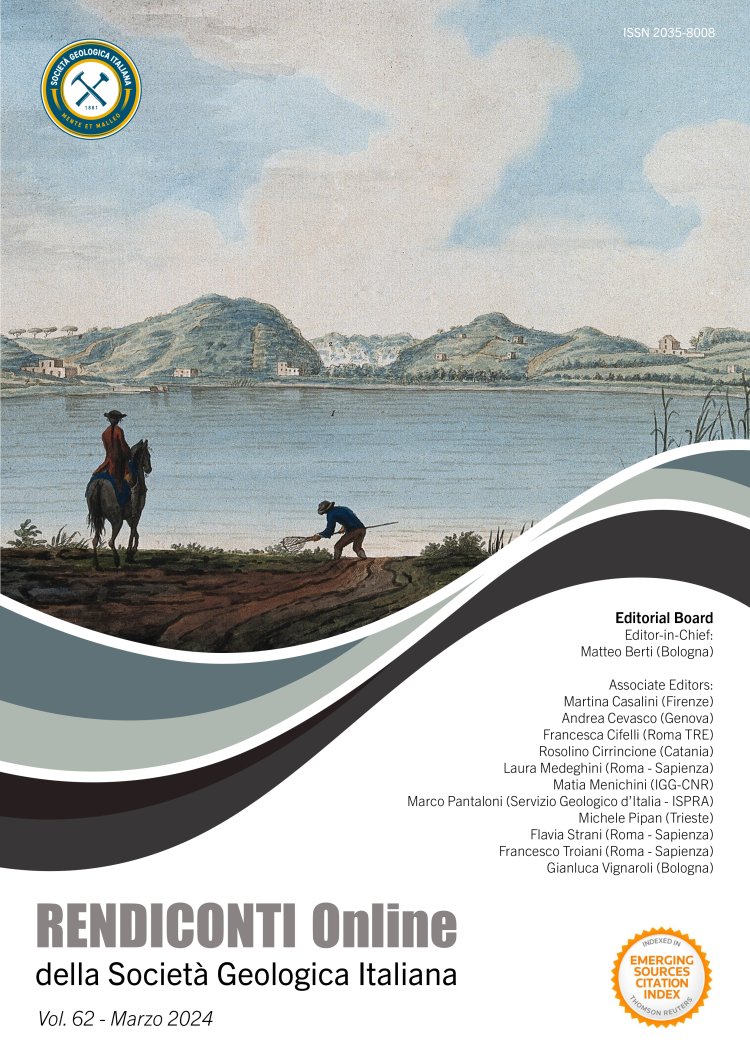
The geognostic map of Phlegraean Fields by Bonaventura Montani (1856): the Bagnoli-Agnano reclamation area
Simone Fabbi1, Fabiana Console2, Marco Pantaloni2 & Claudia Principe3,4
1Dipartimento di Scienze della Terra, Sapienza Università di Roma, Rome, Italy.
2Italian Institute for Environmental Protection and Research (ISPRA), Rome, Italy.
3National Research Council (CNR), Pisa, Italy.
4Istituto Nazionale di Geofisica e Vulcanologia, Osservatorio Vesuviano (INGV-OV), Napoli, Italy.
Corresponding author e-mail: simone.fabbi@uniroma1.it
Volume: 62/2024
Pages: 89-102
Abstract
The geological map of the Bagnoli-Agnano reclamation area was produced by Bonaventura Montani in 1856 with the purpose to assist in the reclamation project of the Agnano Lake area, which was plagued by unhealthy conditions and endemic malaria. The Phlegraean Fields are a volcanic region renowned for its susceptibility to cataclysmic events and high population density, which major eruptions took place approximately 39,000 and 14,500 years ago. Montani provided information about the nature of the volcanic rocks and the previous existence of marine deposits in the Bagnoli plain, excluding the presence of peat deposits in the underground, also through the drilling of seven geognostic boreholes. Based on geological observation, Montani proposed an optimal route for the drainage channel of Agnano Lake, thereby avoiding the challenging task of perforating the trachitic lava bodies of Accademia and Monte Olibano. He demonstrated that the diffuse gas emissions in the region had a volcanic origin and were not the primary cause of illnesses among the local peasants, which he related to the fermentation of plants processed on the shores of Agnano Lake. The reclamation of the Agnano Lake area was subsequently completed in 1870 after the Unification of Italy.
Keywords
Get Full Text